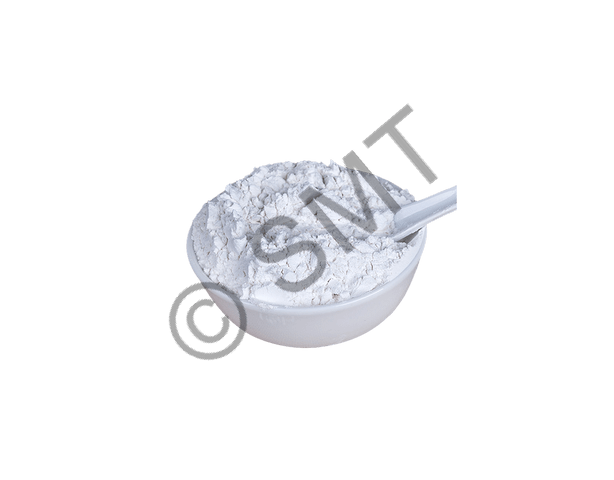| The cooking method of white rice flour requires attention to detail and precision in order to achieve optimal results. First, it is important to properly measure out the flour and sift it to remove any lumps before adding it to the liquid. This will prevent clumping and ensure a smooth consistency. When cooking, it is important to use a low heat setting and stir constantly to prevent burning or sticking to the pot. The amount of liquid needed will vary depending on the recipe, but typically a ratio of 1:2 (1 cup flour to 2 cups liquid) is used. It is also important to cover the pot with a lid while cooking in order to trap steam and prevent the liquid from evaporating too quickly. Finally, once cooked, white rice flour should be allowed to cool slightly before being used in recipes for optimal texture and flavor. By following these guidelines, one can successfully cook with white rice flour in various dishes ranging from baked goods to soups and stews. | White rice flour is a popular alternative to wheat flour for those on gluten-free diets, but it also offers numerous health benefits. It’s high in resistant starch, which is a type of fiber that supports gut health by feeding friendly gut bacteria and reducing inflammation. This can help prevent digestive disorders such as irritable bowel syndrome and Crohn’s disease. The flour is also rich in vitamins B and E, which support immune function, skin health, and energy production. Additionally, white rice flour has a lower glycemic index than other gluten-free flours like potato or tapioca flour, meaning it doesn’t cause rapid spikes and drops in blood sugar levels that can lead to fatigue and cravings. These factors make white rice flour a nutritious option not only for those with gluten intolerance but for anyone looking to improve their overall health. |
White Rice Flour
| White rice flour is a versatile and gluten-free ingredient that is commonly used in Asian cuisine as a substitute for wheat flour. Made from grounded white rice, the flour has a fine texture and mild flavor, making it suitable for many culinary applications. It’s widely utilized in bakery items like cakes, cookies, and bread because of its fluffy nature and smooth consistency. Besides this, it can be used in savory dishes like soups, stews and sauces as a thickening agent which gives food additional nutritional value by adding carbohydrates to meals. Additionally, white rice flour is abundant in essential vitamins like thiamine, niacin, iron and calcium which make it an excellent addition to any balanced diet. Its versatility makes it accessible for vegetarians or gluten intolerant individuals who can enjoy dishes made from this nutritious alternative without any dietary inconvenience. |
0
People watching this product now!
Category: Flour

Thanks for your enquiry we will get back to you soon.
Cooking Method & Health Benefits
Related products
Gram Flour
| Gram flour, also known as besan or chickpea flour, is a gluten-free flour made from ground chickpeas. It has been used for centuries in Indian, Middle Eastern and Mediterranean cuisines and is known for its high protein content, making it a popular ingredient in vegetarian and vegan diets. Gram flour is versatile and can be used in numerous dishes such as fritters, flatbreads, curries, sweets and even facial masks due to its ability to absorb excess oil. It has a nutty flavor when cooked and can replace traditional wheat-based flours in many recipes. With its high fiber content and low glycemic index, gram flour helps maintain blood sugar levels. Furthermore, gram flour contains essential vitamins such as vitamin B6, folate and iron which contribute to overall health benefits. Gram flour’s rising popularity in Western cuisines highlights the versatility of this nutritious ingredient. |
Mung flour Roasted
| Mung flour roasted is a traditional ingredient in Indian cuisine, and is made from dry-roasted mung bean powder. The process of roasting helps to enhance the flavor of the mung bean and results in a subtly nutty and earthy taste that complements many dishes. Mung flour roasted is commonly used as a thickening agent in curries, soups, and stews because of its binding properties. It also lends itself well to making snacks such as crackers or breads due to its light texture. Nutritiously speaking, mung beans are packed with protein, fiber, vitamins, and minerals which make it an excellent source for plant-based protein. Additionally, this type of flour has a low glycemic index score enabling it to be suitable for people with diabetes or dietary restrictions where carbohydrates need to be controlled. Overall, Mung flour roasted provides consumers with versatile culinary options while boosting nutritional value alongside it. |
Ragi Flour
| Ragi flour, also known as finger millet flour, is a highly nutritious dietary option due to its high content of essential nutrients such as calcium, iron, and dietary fiber. This gluten-free flour is an ideal choice for people who are gluten-intolerant or have celiac disease. It has a low glycemic index, making it a perfect choice for individuals with diabetes as it regulates blood sugar levels effectively. This low-fat flour has been shown to improve digestion and promote weight loss by providing satiety without adding extra calories. Other health benefits include reducing the risk of heart diseases, improving bone density, and enhancing brain function due to its high content of amino acids. Ragi flour can be used in several recipes like rotis, dosas, pancakes and even desserts like cakes and cookies. Its versatility makes it an excellent addition to any healthy diet plan. |
Red Rice Flour Roasted
| Red rice flour roasted is a nutritious and delicious food ingredient that has become increasingly popular in recent years. Made from finely ground red rice grains, this flour offers a range of health benefits including high levels of antioxidants, minerals, and vitamins. Roasting adds a unique flavor to the flour and enhances its nutritional profile by breaking down complex carbohydrates into simpler forms that are easier for the body to absorb. Red rice flour roasted can be used in a variety of dishes such as bread, cakes, cookies, and sauces to provide added texture and flavor. It is an excellent alternative for individuals who cannot tolerate wheat or gluten-based products. With its rich color, distinctive taste, and various health benefits, red rice flour roasted has become a staple ingredient in many kitchens around the world. |





